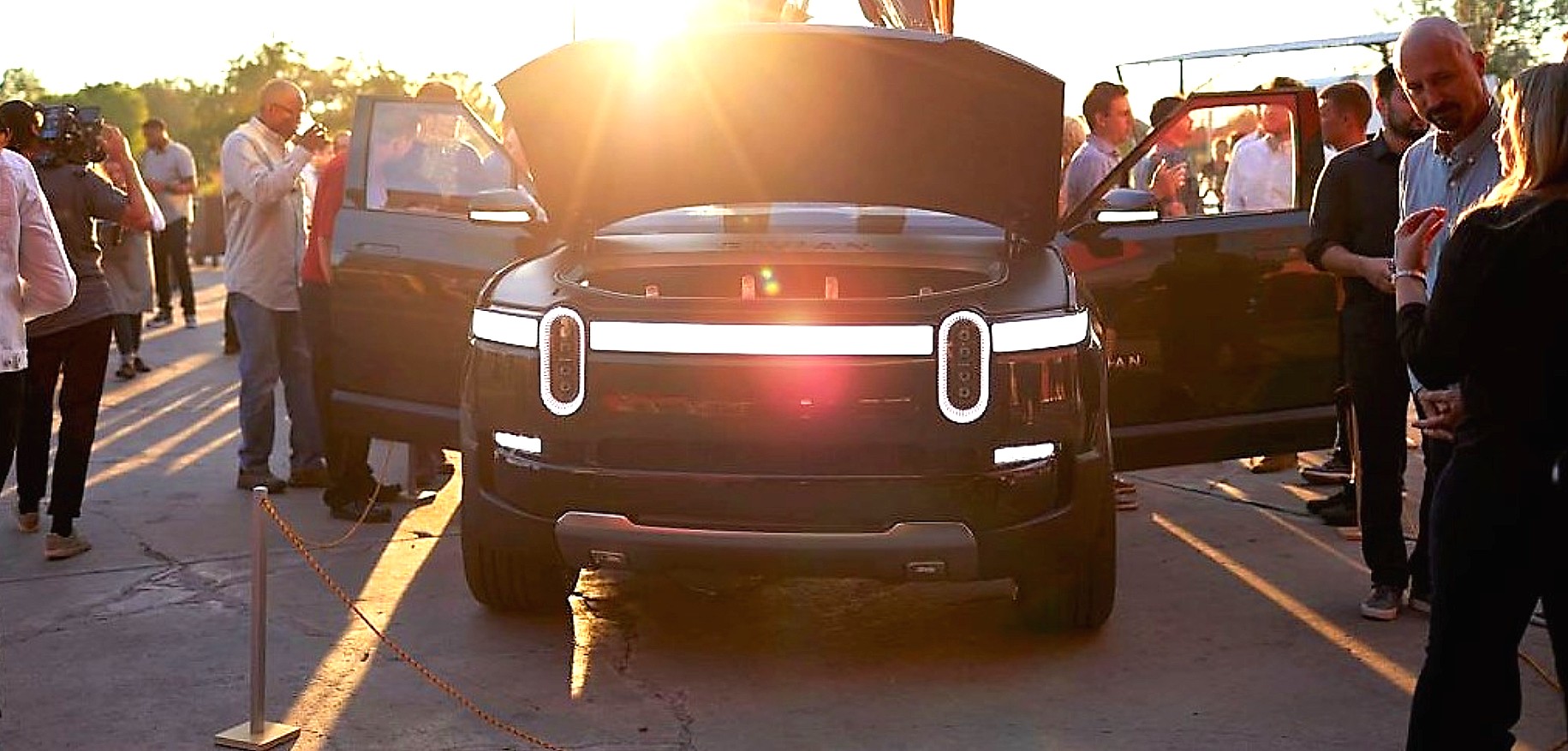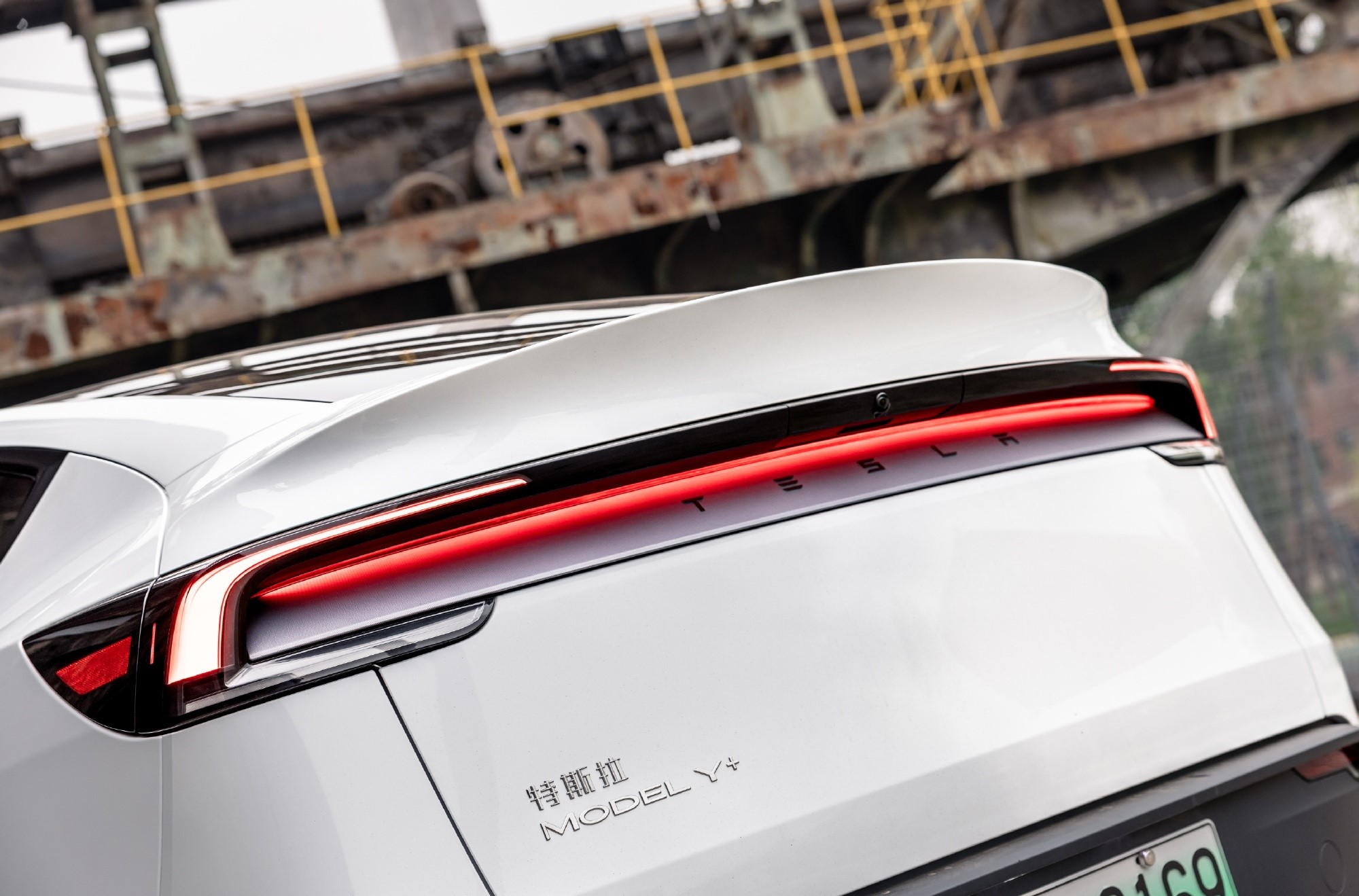

News
Rivian’s community growth is driven by a focus on sustainability
Rivian only officially entered the auto manufacturing scene last November, but you’d hardly know it by the headway the company has made in terms of branding and enthusiasm for its upcoming all-electric R1T pickup truck and R1S SUV. The startup’s flurry of marketing activity in the months since launching is largely to thank for the growing, nascent community. However, Rivian now has its sights set on earning even more respect from the clean energy crowd that’s already excited about electric vehicles via energy storage projects.
Last week, Rivian announced a new partnership with rock climber Alex Honnold and the Honnold Foundation to use the car maker’s used vehicle batteries for microgrid energy storage in underserved areas. The first project will take place in Adjuntas, Puerto Rico working with Casa Pueblo, a local organization committed transitioning their city’s energy grid to solar power. In the wake of Hurricane Maria, the Adjuntas community is ready for sustainable, independent energy sources, and Rivan’s batteries have substantial capacity – even after their vehicle life cycle is expended – to help with that transition.
The batteries Rivan is designing for its vehicles are purpose-built to have second-life storage applications, and the Adjuntas microgrid project will enable the company to implement the first steps of this broader plan. While the first R1T and R1S vehicles have yet to be delivered to patiently awaiting customers, spending time on environmentally-focused projects has been part of Rivian’s plans since its inception. “It’s the central motivation for the business,” CEO RJ Scaringe explained in a recently live streamed conversation about the joint microgrid initiative.
Many thanks to everyone who traveled near and far to be with us Saturday night in Denver. Such an amazing community is forming. To @casapuebloorg , @honnoldfound , @AlexHonnold, @RichRoll – exciting things to come . See more https://t.co/0XXhEqf5wk pic.twitter.com/yjjAThdzen
— Rivian (@Rivian) June 18, 2019
Scaringe is a self-described car enthusiast, but as his awareness and concern for the environmental issues surrounding gas-powered vehicles grew, he eventually made the decision to start a new car company that matched his values.
“The [cars] that I really loved were simultaneously making the planet worse, whether it’s geopolitical or air quality or climate change, and it really bothered me,” Scaringe admitted. “So…the way I thought I could have the most impact was to start a company. In starting Rivian, the goal was to create products that are exciting and built with passion and deliver real performance, but at the same time are deeply sustainable… The decisions we make as a company are absolutely made from the vantage point of how do we have the most impact.”
Alongside energy projects, Rivian has also made several appearances at trade shows, auto shows, and outdoor vendor events to continue building a network of business and consumer relationships that grow its community. New features and options have been announced as well, such as vehicle-to-vehicle charging and a portable kitchen set for the R1T gear tunnel, all of which have helped keep up enthusiasm for the company.

The attention Rivian has already garnered for the high-tech and performance stats of its upcoming R1T truck and R1S SUV is well deserved. Both vehicles have four electric motors with 750-800 total horsepower that can reach highway speeds in around 3 seconds, and 147 kW of independent power at each wheel also provides for torque vectoring. Rivian’s high-density battery packs have a thermal control system that adapts according to charging and driving behavior, and they’re tightly encased using advanced materials science to be capable of wading up to three feet of water. The 180 kWh “megapack” option is expected to give around 400 miles of range.
Rivian already has plenty to offer future customers as an all-electric car manufacturer full of innovative ideas, and their new sustainability initiative adds to the startup’s promising outlook. Production is slated for 2020 and pre-orders are available on the official website.
News
Tesla opens massive solar Supercharger station in California
The Supercharger opened to customers ahead of Fourth of July weekend, while Tesla continues phase two of construction on the site.

Tesla has officially launched the first several Supercharging posts at a massive station in California, notably including solar canopies and grid-scale batteries to offer completely renewable charging.
Last week, Tesla announced on X that it opened the first 84 Supercharger stalls of a planned 168-stall station in Lost Hills, California. Additionally, the massive Supercharger project features 11MW of solar canopies and 10 Megapack batteries for off-grid charging powered entirely by solar energy.
Tesla completed the first phase of the project just days ahead of the busy Fourth of July holiday weekend, adding that initial construction took just eight months. In addition to the remaining charging stalls, Tesla says it’s building a set of lounge areas, renderings of which can be seen below alongside current photos of the site.
Notably, the site also includes V4 charging posts for the company’s latest available charging speeds, and it’s located near the busy junction between I-5 and Highway 46 in Kern County.
“Thank you [Kern County] and [PG&E] for collaboration and approvals,” Tesla wrote in a follow-up post.

Credit: Tesla Charging | X

Credit: Tesla Charging | X

Credit: Tesla Charging | X

Credit: Tesla Charging | X
Tesla Supercharger Maps for North America, Europe, and Asia pic.twitter.com/0U5r0XRPyo
— TESLARATI (@Teslarati) July 2, 2025
READ MORE ON TESLA SUPERCHARGERS: Tesla launches ultra-fast V4 Superchargers in China for the first time
Testing at the LA Diner, plus Musk update on potential Tesla solar Gigafactory
The huge Tesla Supercharger station completed phase one of construction fairly quickly, especially given how long Tesla has been working on its unique Los Angeles diner, drive-in, and Supercharger location. Still, the company was seen performing some testing at the nearly-completed charging station earlier this month, and will reportedly be holding a job fair.
Elon Musk also responded on Monday morning to a post on X, suggesting that Tesla is “thinking about” building a U.S.-based solar Gigafactory in order to help support increased power needs with AI growth, and to bolster domestic solar production.
Tesla is building a new UFO-inspired Supercharger in the heart of Alien country
News
Tesla driver walks away from major accident with minor injuries
The driver sustained only minor injuries, and the exact cause of the crash remains under investigation.

The driver of a Tesla Model Y survived and walked away from a harrowing accident on Monday in California, only sustaining minor injuries despite the vehicle being impaled by a guardrail.
On Monday morning around 4:34 a.m., the Los Banos division of the California Highway Patrol (CHP) responded to the accident on I-5 near Panoche Road, involving a 23-year-old in a Tesla Model Y. According to a post on social media, the driver veered off the road for unknown reasons in the northbound lane, before crashing directly into the guardrail and impaling the vehicle.
You can read the full message and photos from Los Banos CHP below, as were shared in a Facebook post on Monday afternoon.
This morning a Tesla model y was traveling in the #1 northbound lane of I-5 north of Panoche Rd. For unknown reasons driver allowed V-1 to veer off the roadway, travel through a dirt center divide, and crashed into the fixed metal guardrail. Lucky for the driver he only sustained minor injuries and was able to walk away. Driving a vehicle requires 100% attention to the road. Avoid distractions and focus on driving.

Credit: CHP Los Banos (via Facebook)

Credit: CHP Los Banos (via Facebook)

Credit: CHP Los Banos (via Facebook)
In a statement to SFGate, CHP officer Myles Anderson said that the driver only sustained minor injuries, while no arrests are made and drugs and alcohol are not suspected to have been involved. The report also notes that Tesla’s “cruise control and lane assistance features” were activated, according to Anderson. However, it’s not entirely clear if this is referring to Supervised Full Self-Driving (FSD), or to the cruise control and lane assist features baked into Autopilot.
At the time of writing, CHP has not yet responded to Teslarati’s request for clarification and additional details on the matter.
Tesla Crash Safety Ratings across its lineup: pic.twitter.com/ny30R7ceji
— TESLARATI (@Teslarati) July 1, 2025
READ MORE ON TESLA SAFETY: Tesla rolls out crucial new safety feature aimed at saving children
The news comes after Tesla has touted its vehicles as incredibly safe for many years. In December, for example, the company highlighted receiving top safety scores from regulators on four different continents throughout the world, including from the National Highway Traffic Safety Administration (NHTSA) and the Insurance Institute of Highway Safety (IIHS) in the U.S.
Tesla has also listed the goal of making its vehicles the safest on the road throughout the years, both in the overall design of its vehicles and in its Autopilot and Full Self-Driving (FSD) programs.
Tesla Model 3 ranks as the safest new car in Europe for 2025, per Euro NCAP tests
Investor's Corner
Cantor Fitzgerald maintains Tesla (TSLA) ‘Overweight’ rating amid Q2 2025 deliveries
Cantor Fitzgerald is holding firm on its bullish stance for the electric vehicle maker.

Cantor Fitzgerald is holding firm on its bullish stance for Tesla (NASDAQ: TSLA), reiterating its “Overweight” rating and $355 price target amidst the company’s release of its Q2 2025 vehicle delivery and production report.
Tesla delivered 384,122 vehicles in Q2 2025, falling below last year’s Q2 figure of 443,956 units. Despite softer demand in some countries in Europe and ongoing controversies surrounding CEO Elon Musk, the firm maintained its view that Tesla is a long-term growth story in the EV sector.
Tesla’s Q2 results
Among the 384,122 vehicles that Tesla delivered in the second quarter, 373,728 were Model 3 and Model Y. The remaining 10,394 units were attributed to the Model S, Model X, and Cybertruck. Production was largely flat year-over-year at 410,244 units.
In the energy division, Tesla deployed 9.6 GWh of energy storage in Q2, which was above last year’s 9.4 GWh. Overall, Tesla continues to hold a strong position with $95.7 billion in trailing twelve-month revenue and a 17.7% gross margin, as noted in a report from Investing.com.
Tesla’s stock is still volatile
Tesla’s market cap fell to $941 billion on Monday amid volatility that was likely caused in no small part by CEO Elon Musk’s political posts on X over the weekend. Musk has announced that he is forming the America Party to serve as a third option for voters in the United States, a decision that has earned the ire of U.S. President Donald Trump.
Despite Musk’s controversial nature, some analysts remain bullish on TSLA stock. Apart from Cantor Fitzgerald, Canaccord Genuity also reiterated its “Buy” rating on Tesla shares, with the firm highlighting the company’s positive Q2 vehicle deliveries, which exceeded its expectations by 24,000 units. Cannacord also noted that Tesla remains strong in several markets despite its year-over-year decline in deliveries.
-

 Elon Musk1 week ago
Elon Musk1 week agoTesla investors will be shocked by Jim Cramer’s latest assessment
-

 News2 weeks ago
News2 weeks agoTesla Robotaxi’s biggest challenge seems to be this one thing
-

 News2 weeks ago
News2 weeks agoWatch the first true Tesla Robotaxi intervention by safety monitor
-

 Elon Musk1 week ago
Elon Musk1 week agoA Tesla just delivered itself to a customer autonomously, Elon Musk confirms
-

 News2 weeks ago
News2 weeks agoTesla Robotaxi rollout proves that Elon Musk still delivers, even if it’s late
-

 Elon Musk2 weeks ago
Elon Musk2 weeks agoElon Musk confirms Tesla Optimus V3 already uses Grok voice AI
-

 Elon Musk2 weeks ago
Elon Musk2 weeks agoxAI welcomes Memphis pollution results, environmental groups push back
-

 Elon Musk2 weeks ago
Elon Musk2 weeks agoElon Musk commends Tesla team on successful Robotaxi launch


















